Mold allergies, prevalent across age groups, arise from mold-a ubiquitous fungus that flourishes particularly in humid environments. Exposure to mold spores in allergic individuals triggers an exaggerated immune response, leading to varied symptoms, including skin manifestations like rashes, eczema, atopic dermatitis, hives, and skin discoloration.
When you cross paths with mold, especially the infamous black mold, your skin might throw a bit of a fit. Mold can stir up a skin rash, leaving you with red, itchy patches, often on your arms, face, and neck. These spots can get pretty sore and swollen, and yes, they might even turn into blisters. If you're already dealing with dry, itchy skin, mold is like adding fuel to the fire, making your skin even more irritated and blister-prone.
Allergies to mold add another layer to the drama. Black mold, in particular, can be the villain behind itchy, inflamed skin, which, in more serious cases, might even start to weep. If hives enter the scene, you'll notice raised, itchy bumps. These can either be red or just blend in with your skin tone, like uninvited guests at a party.
And let's not forget about discolorations. Mold exposure can play tricks on your skin's coloring, leading to patches that are either lighter or darker than your usual skin tone. It's like mold's way of disrupting the harmony of your skin's appearance.




Symptoms of mold allergies often mirror those of other allergic reactions, like hay fever or asthma, and can differ based on the individual's sensitivity and the specific mold type.
If experiencing these symptoms, it's imperative to consult a physician. They'd delve into your medical history, possibly conduct a physical exam, and recommend allergy tests. Two primary allergy tests include skin tests-where allergens are introduced under the skin to observe reactions and blood tests-which measure allergen-specific antibodies in the bloodstream.
If you're grappling with an allergic reaction, treatment of mold sources is paramount to halt further aggravation. Here are some modern treatments for mold allergies:
These are essential in alleviating typical allergy symptoms such as a runny nose, sneezing, and coughing. They are commonly available as oral tablets.
Available as creams, ointments, and sprays, these medications boast potent anti-inflammatory and itch-relieving properties. They are effective against skin redness, swelling, and irritation, as well as respiratory symptoms like coughing and asthma-related issues.
These specifically target mold fungi, hindering their growth and ultimately leading to their elimination.
This innovative treatment aims to desensitize individuals to mold. Patients receive injections containing minuscule allergen doses at set intervals. The therapy kicks off with the least allergen concentration, progressively increasing over time. While ASIT is a longer-term commitment, it consistently yields promising outcomes.
Minimizing mold exposure is the cornerstone of mold allergy management. Steps include:
As a mold cleaning specialist, I know that mold, a sneaky fungus, loves damp, dark spots and can cause health issues like allergies, asthma, and respiratory infections. It's also not great for your home and belongings. To keep black mold at bay, here's what you can do:
Control Humidity: Mold's a fan of humidity. Keep indoor humidity under 50% with dehumidifiers and exhaust fans and by cracking open windows and doors for fresh air.
Fix Leaks ASAP: Leaks from roofs, pipes, or gutters? Fix them fast to stop mold's favorite hangout spots.
Dry Wet Areas Quickly: Spills, post-shower puddles, or damp clothes - dry them out pronto.
Boost Air Flow: Open windows, use fans, and don't let furniture hug walls too closely to keep the air moving.
Regular Clean-Up: Stick to a cleaning schedule, especially in mold hotspots like bathrooms and kitchens, to keep mold spores and allergens in check.
Kitchen: Wipe up spills immediately, keep countertops and appliances dry, and use the exhaust fan when cooking or washing dishes.
Bathroom: Turn on the exhaust fan during showers, dry off shower areas afterward, and keep wet towels off the floor.
Basement: Keep it dry and well-ventilated. If you have a sump pump, make sure it's working properly.
Attic: Good ventilation is key, and adding insulation helps prevent condensation.
If mold does show up, tackle it right away. Wear gloves, masks, and goggles for protection. If the mold situation is big or feels too much, it's wise to call in a mold removal expert. Following these tips will help you keep mold under control, protecting both your health and your home.
It's crucial to consult a medical professional if you experience any of the following symptoms:
Continuous dry cough, difficulty breathing, feelings of choking, bodily rashes, nasal congestion, or a runny nose, especially without accompanying fever.
Prolonged exposure to mold can lead to various health issues, such as aggravation or onset of asthma symptoms, upper respiratory infections, and allergic lung damage, which can manifest with pneumonia-like symptoms.
Certain professions pose a higher risk of mold exposure, thereby increasing the likelihood of allergy development. These include Farmers, Dairy workers, Loggers, Bakers, Carpenters, Greenhouse attendants, Winemakers, Furniture restorers, and others.
When mold infestations are extensive or difficult to handle on your own, it's advisable to seek the assistance of professional mold remediation experts.



